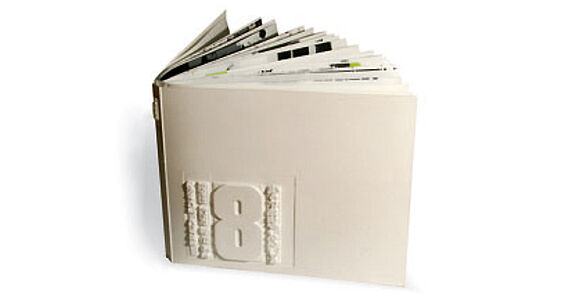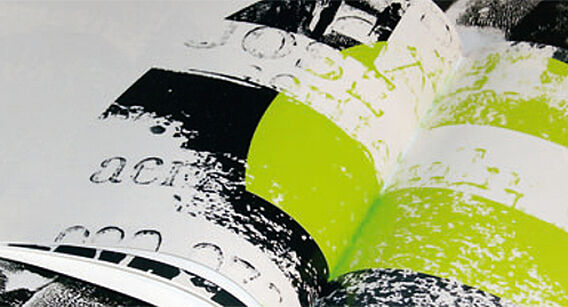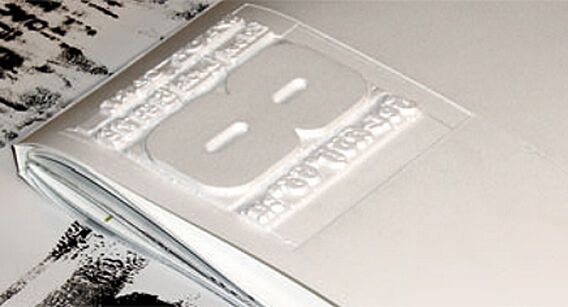Druck, Blei & Bytes – an experiment with physical and virtual graphics
The idea behind this work was to deal with the traits of traditional lead composition, including mirror-inverted print images, as well as the irregularity of print images and the individuality of various prints. The goal was to find new implementation methods through experimentation. From the outset it was clear that lead composition would be the basis of the work, since it stands in contrast to the computer, the technology which has replaced lead composition completely. The conventional book form has remained unchanged to maintain a connection with tradition but with the intention of finding new ways to use the material, production and contents. It must be clear to every user that the book is in the here and now and that it represents a bridge from the beginnings of printing through the ensuing societal changes that provided access to knowledge and development, as well as the replication and dissemination of information to the general public. Information is not transmitted by words, but every page has been designed using the origins of craftsmanship. The focus is on the results of experimental printing.
For the physical experiments, which used high-pressure elements, it was important to create unique pieces that could not have been developed at the computer and whose appearance shows the craftsmanship that was required to make them. After a number of selected printing results had been scanned, a virtual experiment only allowed movements within the non-tangible dimension of the monitor, that is, no printouts were made during this phase. The experiment was implemented on the screen only.
For a stark contrast in the color range, a bright green that is the complementary color to the traditional red was selected. Red always has been used for highlighting purposes in book design, for example, for initials. It is difficult to simulate this green color within the CMYK color scale. In four-color printing, greens are created by mixing cyan and yellow. This green, however, lies outside the range of the mix. The tone selected was Pantone 389, which in CMYK cannot be displayed as lush and bright. Being a design element, the main task of the green color is to lead the reader through the book as a coherent element that is apt to change. Another element is the pixels, which due to their language of form represent a contrast between the computer and original printing. These pixels have been created with the use of a filter and applied depending on the motifs. The goal was to design each page individually and to find a line that is cohesive to the viewer. The development of the dot to the line and back to the dot spans the arch between the beginning and the end of the presentation. This is presented in a playful manner, and the elements do not come across as having been forced. The cover design was based on the idea of displaying lead composition in an optical fashion. To create the cover, polypropylene foil was formed in a deep-drawing process.
The page is made of white polyethylene foil weighing 252 grams per square meter that has been printed with UV offset. This material has many characteristics – it is weather-resistant, cost-effective and environmentally-friendly. Informative material, archived material, instructions and posters (especially for outdoors) are very durable. The color is light-fast and the material takes more than 10,000 years to decompose.


